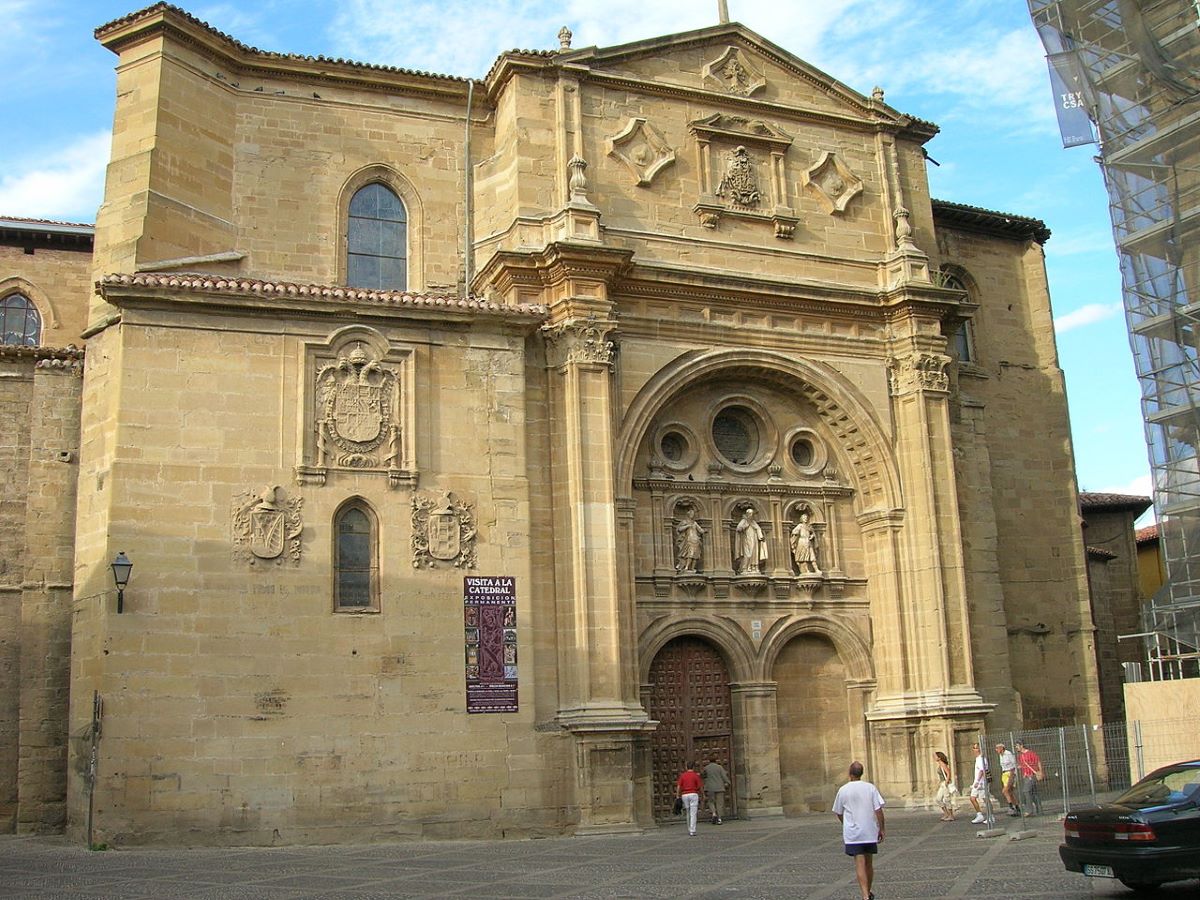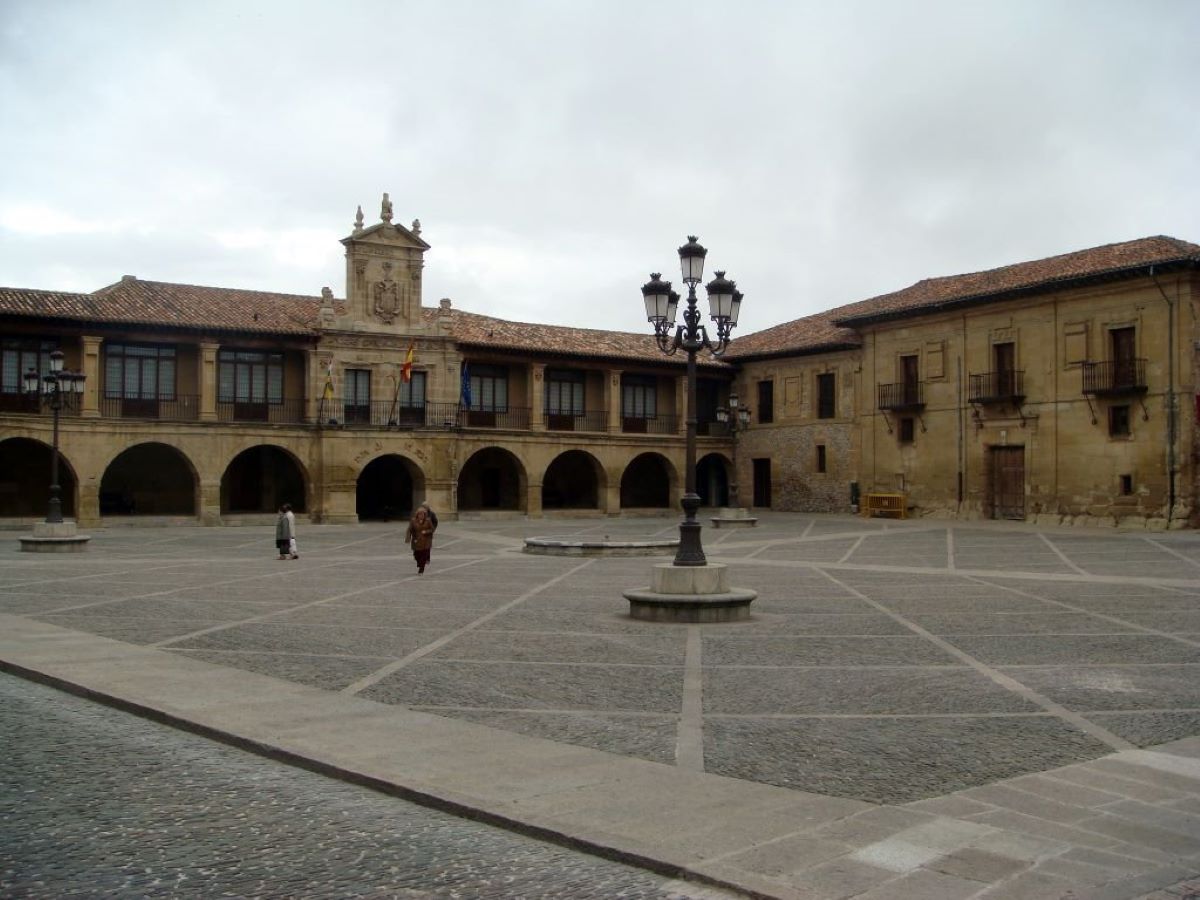
Image | José Antonio Gil Martínez Wikipedia
Santo Domingo de la Calzada is a quiet town in La Rioja (Spain) located on the banks of the Oja River with great importance on the route of the Camino de Santiago. It was here that Santo Domingo founded the town and built a bridge over the Roman road to facilitate the passage of pilgrims, a hermitage and a hospital to assist them on their way. The Xacobea route fostered its development and turned Santo Domingo de la Calzada into a very important economic, religious and artistic epicenter during the late Middle Ages that has bequeathed us true gems.
If on your next vacation you would like to make a getaway to this old and beautiful Riojan town, then we take a short tour of the most outstanding monuments of Santo Domingo de la Calzada.
The Cathedral of Santo Domingo de la Calzada
The Cathedral of Santo Domingo de la Calzada is an example of protogothic architecture that at the beginning of the XNUMXth century was enlarged to become a church-fortress, the only one in La Rioja.
Inside is the main altarpiece, one of the most beautiful examples of Renaissance sculpture in Spain, the work of Damián Forment. The sepulcher of Santo Domingo de la Calzada is a very interesting work in which several styles converge: Romanesque is the sepulchral lauda in which the recumbent Saint is represented, Gothic is the table on which his miracles are told and late Gothic is the temple .
We can also find the rooster and the hen of the miracle that live in here. Legend has it that Domingo García proved that a pilgrim accused by mistake was innocent because he made a roast chicken fly. As a reminder, in the cathedral there is always a live rooster and hen, and that's where the popular saying comes from "In Santo Domingo de la Calzada, where the hen sang after it was roasted."
Exempt Tower
This is the third of the three towers that the Cathedral of Santo Domingo de la Calzada has had in its history. The first, Romanesque, was destroyed after a fire in the mid-XNUMXth century, the second in the Gothic style and the third in the Baroque style, which is the one that remains standing and bears the stamp of the architect Martín de Beratúa. This tower is one of the few examples in which we find a separate tower from the body of the cathedral. As a curiosity, to say that it is the highest tower in La Rioja with its 70 meters high.

Image | Mapio
Spain Square
The city's Plaza Mayor is called Plaza de España and is located just behind the cathedral. This square was created with the construction of the XNUMXth century walls and given its size it served as a market and a bullring. Today the Town Hall is located here.
Pilgrims Hospital
The old Pilgrims Hospital of Santo Domingo de la Calzada is located in the Plaza del Santo, which was devised by Santo Domingo himself in the XNUMXth century. It is characterized by preserving its original basilica plan structure, three naves and a main façade that has a door from the XNUMXth century that can be seen today.
The old Pilgrim Hospital of Santo Domingo de la Calzada was active until 1965 as a pilgrims' hostel on the Camino de Santiago. Later it became a Parador de Turismo.
Cistercian Abbey
The pilgrim hostel of the Cistercian Abbey Our Lady of the Annunciation of Santo Domingo de la Calzada is an exclusive refuge for pilgrims with a credential who make the Camino de Santiago. It is an interesting XNUMXth century building that is located on the main street of the municipality next to the abbey church.
Inside you can visit its church and the alabaster tomb of three bishops, the founder and his two nephews.
The walls of Santo Domingo de la Calzada
The walled enclosure of Santo Domingo de la Calzada is the most important that we find in all of Rioja and it had seven access gates. The walls came to have up to 28 towers 12 meters high, with a perimeter of more than 1 kilometers. It began to be delimited in the 5th century by enclosing part of the Calle Mayor, from the Old Quarter to the New River, but it was not until the XNUMXth century that King Pedro I gave the order to start building the walls.
House of the Saint
Where the Camino de Santiago runs, continuing along Calle Mayor, we find the Casa de la Cofradía del Santo, one of the oldest in the city, and where the chickens in the Cathedral chicken coop are raised. Next we have the Casa del Santo, headquarters of the Information Office of the Camino de Santiago for pilgrims and visitors.